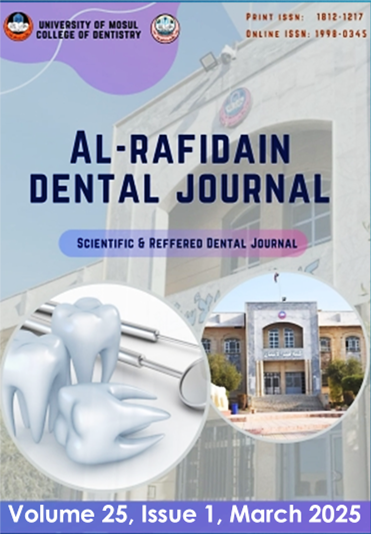Impact of Hydroxyapatite Tooth Paste on Enamel Surface Roughness of Artificially Demineralized Permanent Teeth (An in vitro study).
Abstract
Aims: The current study aimed to evaluate the impact of hydroxyapatite (HA) toothpaste, synthesized from chicken eggshell powder (CESP) on the surface roughness of artificially demineralized enamel, in comparison to sodium fluoride paste via profile projector machine. Materials and Methods: Fifty sound premolars had been split into five groups at random, and artificial caries lesion was made by soaking the samples in the demineralizing solutions, and demineralized surface was cured with: G1 (base line group n=10) without any thing, G2 (control negative group n=10) immersed in demineralizing solution only, G3 (HA paste group n=10) treated with HA paste, G4: (Naf n=10) treated with sodium fluoride paste as control positive, G5: (combination group n=10) treated with HA paste and Naf paste alternatively. The enamel surface roughness was evaluated (at base line, after demineralization, and after treatment. Results: All teeth samples exhibited increased surface roughness after demineralization, in comparison with surface roughness of baseline group, then all treatment groups showed decrease in surface roughness after treatment, except control negative where was deionized water used for storing teeth. Conclusion: HA paste, Naf toothpaste (Flurokin), and a combination of them have remineralizing ability; a decrease in the surface roughness of demineralized enamel surface reflects this.












